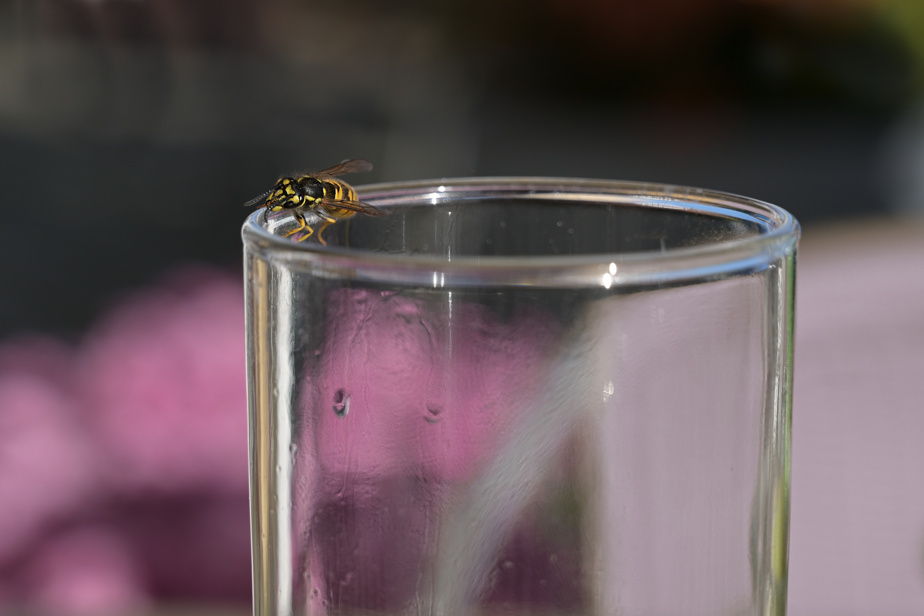Unwanted guests
You barely have time to sit down at the table when the buzzing of a wasp makes you swear? Be patient, because you will have to live with your girlfriends for a few more weeks, who are more numerous at this time of year. “We see the most wasps in August and September,” explains Étienne Normandin-Leclerc, entomologist and coordinator of insect collections at the Université de Montréal. The reason is simple: colonies reach maturity at the end of summer. The only ones to hibernate during the winter, the queens begin to lay their eggs in the spring. As the season progresses, the colony grows larger. Once completed, a single nest can reach the size of a basketball and house several hundred wasps, crisscrossing the surrounding parks and terraces in search of food. Interestingly, it is the females who are most likely to ruin the aperitif. “The workers are much more active in looking for food outside, because they have to feed the larvae,” explains the specialist.
Sweet tooth
Has a wasp been circling over your table for the past half hour? Cork the wine bottles, clear away the leftovers, and make sure the trash cans are properly closed. Wasps are attracted to the smell of food. And they love sugar. Even a few drops of fizzy drink on the floor can be a real feast. “The smell of fermentation also attracts them,” says Étienne Normandin-Leclerc. “Fermentation releases molecules that are detectable much further away than other molecules,” he explains. Like bees, wasps also like flowers, especially males.
Traps
There are several ways to keep wasps away, some more effective than others. Traps that use a sugary jelly can be an easy solution, but they also have the opposite effect of attracting… more wasps. “If there is a nest nearby, it can be useful to set a trap because the wasps are close by anyway. But if there aren’t that many, it’s sometimes better to tolerate them,” advises Mr. Normandin-Leclerc. Often used when camping, the spirals that are burned to repel mosquitoes can also be effective against wasps by camouflaging the smell of food. And aerosols? The specialist does not recommend them. In addition to having a relatively temporary effect, they present a risk for people allergic to wasp stings. “The wasps will become agitated when sprayed,” he explains.
Warning
Have you just discovered that a colony has taken up residence under your balcony? Above all, don’t play the hero by trying to remove the nest yourself. During this season, it’s better to call in professionals. “Trying to destroy a large wasp nest at the end of summer is dangerous,” warns Université Laval associate professor Conrad Cloutier, citing the risk of being stung by several wasps at once. Generally speaking, the smaller the nest, the easier it is to remove. Therefore, the beginning of summer is the best time to inspect your home. “You should destroy nests that are forming at the beginning of summer as soon as you notice their presence,” he says.
What species of wasps live in Quebec?
While there are hundreds of species of wasps in the country, the best known is the paper wasp, also called the social wasp. As its name suggests, it builds aerial or underground paper nests, which are more dangerous to humans because they are harder to detect. In Quebec, the German wasp, which is striped yellow and black, is one of the most common. “It’s the one you see most often when you eat outside,” notes Étienne Normandin-Leclerc. Its cousin, the white-spotted wasp, is also very common. Outaouais residents, keep your eyes peeled and you might be lucky enough to spot a European hornet, which can be two to three times the size of the white-spotted wasp. “It’s a pretty impressive wasp,” he points out.
